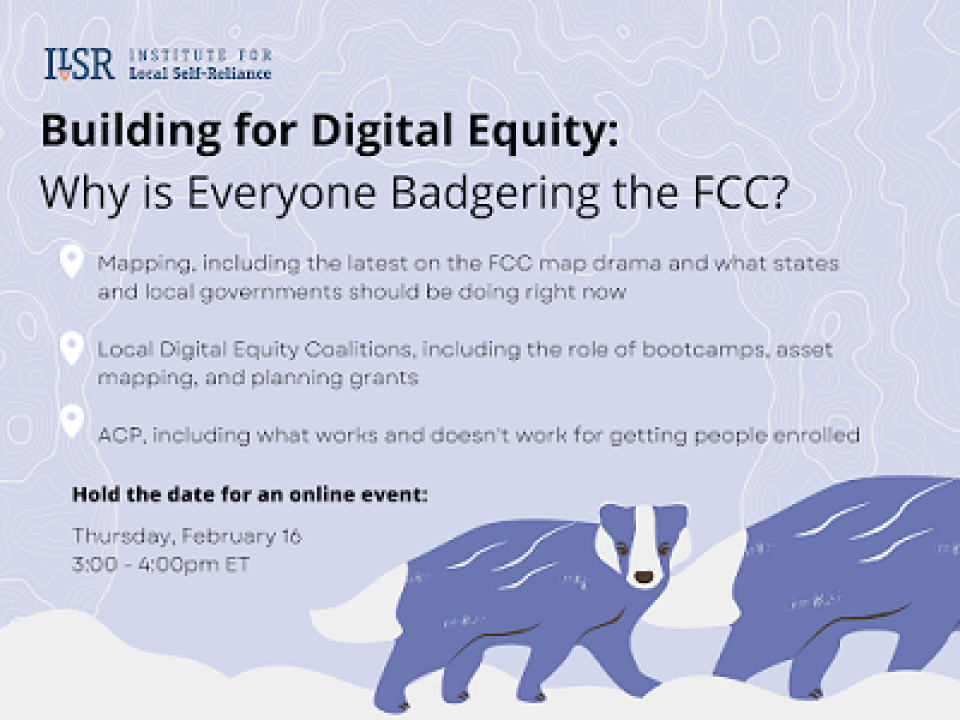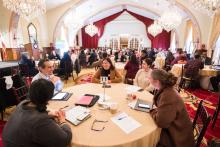Building for Digital Equity Livestream Just Days Away: Register Now
It’s not too late to register for our first Building for Digital Equity (#B4DE) livestream event of the year. This Thursday, Feb. 16, from 2-3 pm CST/3-4 pm ET, ILSR’s Community Broadband Networks Initiative will kick off our Building for Digital Equity series.
The focus will be on two of the hottest topics in broadband right now: mapping and the Affordable Connectivity Program (ACP).
Promising to bring more light than heat, co-host Christopher Mitchell, Community Broadband Networks Initiative Director, will be joined by co-host Kim McKinley, Chief Marketing Officer with UTOPIA Fiber – our sponsor for this year’s series. We are calling this one Building for Digital Equity: Why is Everyone Badgering the FCC?
You can register here.

The event will give an overview of the FCC’s new broadband map and make clear what has been confusing and convoluted for those who have been working to fix the multitude of inaccuracies the map contains through the challenge process.
Our expert guests will break down the difference between fabric and location challenges and availability challenges and how those challenges may, or may not, affect how much each state will receive from the $42.5 billion Broadband Equity Access & Deployment (BEAD) program embedded in the bipartisan infrastructure bill.
Our GIS and Data Visualization Specialist Christine Parker will review helpful mapping tools, which will be followed by a Q&A with audience members.


